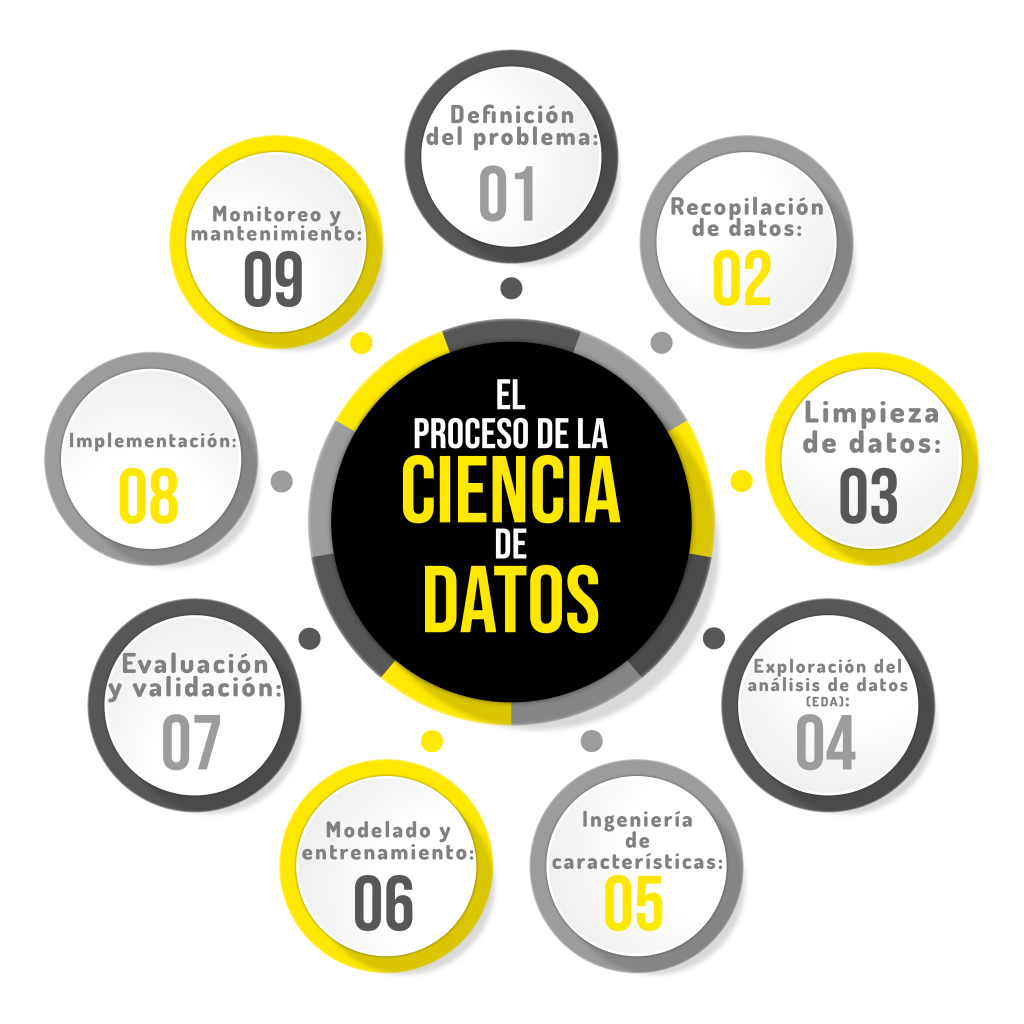
Blog » Sin categorizar » What is Data Science?
In today’s digital age, data is the most valuable resource a company can have. Data science has become a crucial discipline for making the most of this resource and making informed decisions.
Data science is an interdisciplinary field that uses scientific methods, algorithms, processes and systems to extract information from structured and unstructured data. In other words, it is about turning data into actionable information. Data science is a constantly evolving field that encompasses diverse areas such as statistics, programming, artificial intelligence and computational engineering to analyze large amounts of data.
"You can have data without information, but you can't have information without data."
Daniel Keys Mora
Data Science plays a fundamental role in numerous industries, contributing significantly in areas ranging from data-driven decision making to process optimization and increased customer satisfaction. Today, Data Science has established itself as a key strategic resource that drives the efficiency, profitability and adaptability of organizations in an ever-changing business environment.
These would be just a few examples of how data science brings value in different industries:
In the airline industry, Data Science plays an essential role in accurately predicting flight demand for a specific month based on historical data from previous years.
This process involves the collection and analysis of a wide range of data, such as previous bookings, flight occupancy, seasonal and economic factors, as well as weather information. Using machine learning algorithms and time series analysis, predictive models are created that enable airlines to make strategic decisions, such as adjusting seat availability, scheduling flights and setting optimal fares to maximize occupancy and revenue.
In addition, these predictions allow airlines to launch targeted advertising campaigns several months in advance, optimizing marketing and ensuring the profitability of their operations.
The Data Science process consists of several interconnected stages:

Data science is indispensable in the modern world, beyond being just a trend; it is a strategic asset for companies because it combines tools, methods and technology to generate meaning from data, thus enabling leaders to choose the best path forward.
In today’s world, companies have an overwhelming amount of data thanks to the exponential growth of devices that can automatically collect and store information. Online systems and payment gateways are capturing more data in the fields of e-commerce, medicine, finance and virtually every aspect of daily life. We have vast amounts of text, audio, video and image data and in a highly competitive marketplace, those who harness the power of data science gain a significant advantage by uncovering inefficiencies in operations and processes, reducing costs and increasing profitability.
Automation will play an essential role, allowing companies to make the most of their data. At XalDigital we believe that innovation is the key to building a brighter future for our clients. Our goal is to make it easier for you to extract valuable information from your data, allowing you to make the right decisions for the benefit of your company.
Data Science is an interdisciplinary field that uses statistical, mathematical and programming techniques to analyze and extract meaningful information from large data sets.
Traditional statistics focuses on the collection, analysis and presentation of data, while data science goes further by including real-time analysis and the application of machine learning algorithms. This allows you to not only describe data, but also predict future events, automate tasks and make data-driven decisions in more advanced and complex ways.
We can say then that while traditional statistics focuses on specific methods to infer conclusions from data, Data Science encompasses a broader approach that includes data manipulation and visualization, as well as the construction of predictive and machine learning models.
Key skills include programming, statistics, mathematics, machine learning knowledge, visualization aptitude and data manipulation skills. In addition, good communication skills are crucial for presenting results that are often abstract, so they need to be grounded in a way that is understandable to a general audience.
It is important to emphasize that a thorough understanding of the domain in which you are working is essential.